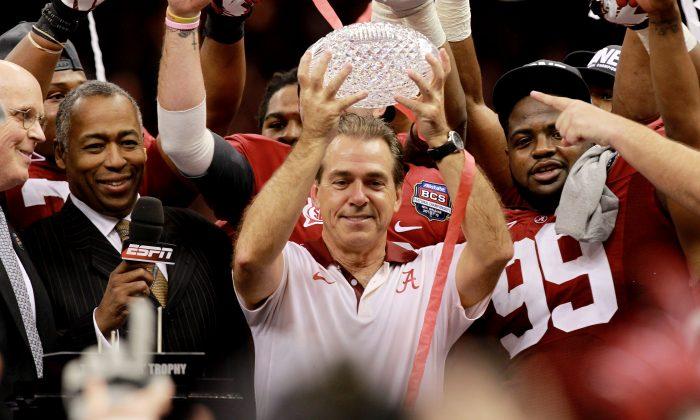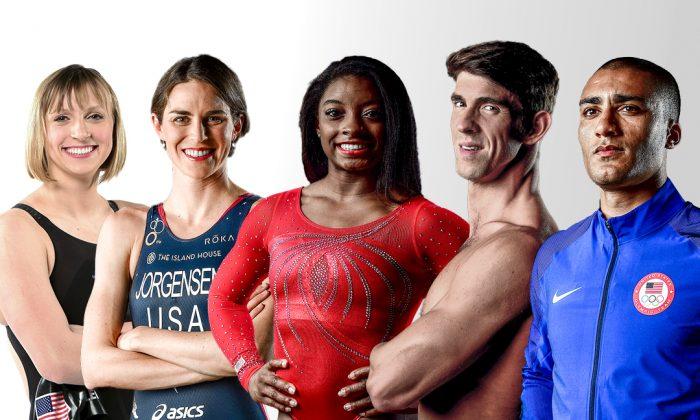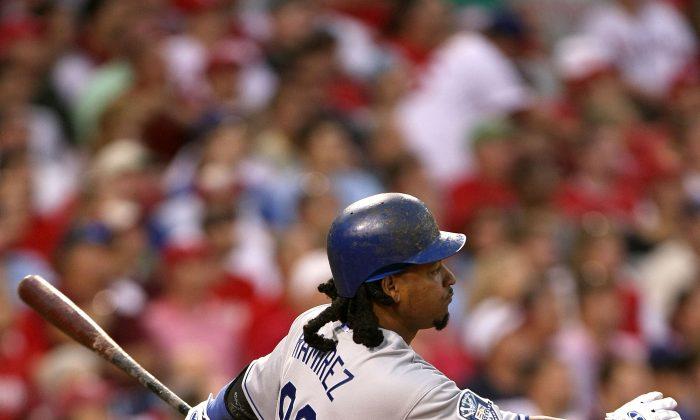Even though the NBA Draft is in June, it’s never too early to project the order of the draft, and who will get taken. Here we go, starting with the NBA’s worst, based on records through March 11:
1. New York Knicks: 6-11, 275 lb. C Jahlil Okafor, Duke—Okafor is the top-scoring center in the draft. He demands a double-team every time he catches the ball and he has the size needed to anchor an NBA offense.
2. Philadelphia 76ers: 6-5, 175 lb. PG D'Angelo Russell, Ohio State—Although the Sixers are the toughest team to figure out, they have enough big men to either pass on Anthony-Towns or trade down to take Russell, who’s the most exciting player in the collegiate game.
3. Minnesota Timberwolves: 6-11, 250 lb. C Karl-Anthony Towns, Kentucky—Towns might actually have been higher on this list had he not sacrificed his minutes for a deep Kentucky team. The skilled big man plays just 20.7 minutes per game, but averages 9.7 points, 6.6 rebounds, and 2.4 blocks during his limited action.
4. Los Angeles Lakers: 6-5, 195 lb. PG Emmanuel Mudiay, China—Mudiay had an up-and-down season with his Chinese team, but it doesn’t seem to have impacted his NBA stock one way or another. He was a top player coming out of high school last year and the combo guard is still considered one of the best available.
5. Orlando Magic: 7-0, 240 lb. C Myles Turner, Texas—Turner is a shot-blocking, rebounding big man. Nine times he’s blocked five or more shots in a game and his 6.6 rebounds per game lead the team.
6. Sacramento Kings: 6-10, 210 lb. PF Kevon Looney, UCLA—Looney averages 12.3 points and 9.5 rebounds per game (second in Pac-12) has put up 14 double-doubles for the Bruins this year—including 27 and 19 against Stanford. He has good range on his shot too, having drained at least one three in seven straight games.
7. Detroit Pistons: 6-7, 240 lb. SF Stanley Johnson, Arizona—Johnson’s been compared to Ron Artest in that he’s a good defender with an excellent motor and good perimeter game. Currently he leads the Wildcats in scoring (13.9) and rebounding (6.6).
8. Denver Nuggets: 7-0, 240 lb. PF Willie Cauley-Stein, Kentucky—Junior Cauely-Stein (8.9 points, 6.4 rebounds, 1.6 blocks per game) has turned into the leader of Kentucky’s young squad and his defense is one of the reasons they’re 31–0. Doesn’t have an outside shot, but knows his strengths.
9. Atlanta Hawks (via Brooklyn Nets): 7-0, 235 lb. PF Frank Kaminsky, Wisconsin—Kaminsky is essentially a poor man’s Dirk Nowitzky—very tall and can score from the perimeter while also being a good rebounder. His only drawback is that he’s a senior and his ceiling is lower than most.
10. Boston Celtics: 6-7, 205 lb. SF Kelly Oubre, Kansas—Oubre started slow, but came alive for Bill Self and Kansas in mid-December and is now the team’s best perimeter defender. With long arms and a great motor he’s also able to shoot the three (37.3 percent) as well as attack the rim.
11. Utah Jazz: 6-11, 220 lb. PF Kristaps Porzingis, Latvia—A good three-point shooter and defender, Porzingis averaging 11.1 points and 4.2 rebounds in Baloncesto Sevilla in the Spanish ACB in roughly 20 minutes a game.
12. Charlotte Hornets: 6-7, 200 lb. SF Mario Hezonja, Croatia—Hezonja is a good shooter with deep range, and he can attack the rim, though his defense is reportedly so-so.
13. Phoenix Suns: 6-11, 230 lb. PF Bobby Portis, Arkansas—The sophomore Portis was the coaches’ SEC Player of the Year after averaging 17.8 points, 8.7 rebounds, and 1.5 blocks per game. Another player who knows his strengths, Portis ranks fourth in the SEC in field-goal percentage at 56.3 percent.
14. Oklahoma City Thunder: 6-5, 185 lb. PG Jerian Grant, Notre Dame—Any team would be fortunate to have Grant running their offense. He’s a pass-first floor general who can also score, leading the Fighting Irish in both categories three straight years.
15. Philadelphia 76ers (via Miami Heat): 6-6, 220 lb. SF Justise Winslow, Duke—Winslow certainly has the size and strength to be an effective small forward in the NBA. A lot will depend on if the freshman’s offensive game develops.
16. Indiana Pacers: 6-6, 195 lb. SG Devin Booker, Kentucky—Booker is another one of those talented Kentucky players, sacrificing his time for the greater good. A tremendous shooter, he’s hit 43.6 percent of his shots from beyond the arc and he’s a decent defender to boot.
17. Milwaukee Bucks: 6-11, 220 lb. PF Christian Wood, UNLV—Wood, as a sophomore, was second in the Mountain West in rebounding (10.0 per game) and blocked shots (2.8), while ranking fifth in scoring (15.6). He put up 24 and 10 in a big win over Arizona, but could benefit from shooting less threes (28.2 percent on the season).
18. Houston Rockets (via New Orleans Pelicans): 6-5, 180 lb. PG Delon Wright, Utah—Wright is a well-rounded point guard who can score (14.7 per game), assist (5.3), and rebound (4.7). His biggest detraction is his age as the senior will be 23 by the time of the draft.
19. Washington Wizards: 6-10, 235 lb. PF Trey Lyles, Kentucky—One of John Calipari’s ’reinforcements’ Lyles, has still averaged 8.3 points and 5.0 rebounds per game, while playing roughly 22 minutes a game as a freshman.
20. Toronto Raptors: 6-6, 220 lb. SF Justin Anderson, Virginia—A good shooter, Anderson is second on the team in scoring (13.4 per game) while connecting on 48.4 percent of his threes (46 of 95). A good defensive player, injuries kept him off the court for more than a month this season.
21. Chicago Bulls: 6-2, 190 lb. PG Terry Rozier, Louisville—Rozier, a sophomore, is one of the quickest players in the country and knows how to attack the rim. His low assist rate (2.8 per game) might scare off some teams, but he is a very athletic player.
22. San Antonio Spurs: 7-0, 230 lb.C Jakob Poeltl, Utah—The Spurs are the one team on the board that pay attention to no one else’s rankings and have done well with foreign players. Poeltl would be a good defender, rebounder, and shot-blocker for Greg Popovich’s squad.
23. Chicago Bulls (via Cleveland Cavaliers): 6-10, 230 lb. PF Domantas Sabonis, Gonzaga—Sabonis, son of former NBA great Arvydas Sabonis, is a good-looking freshman who already knows how to rebound (averages 6.9 in just 21.6 minutes).
24. Dallas Mavericks: 6-7, 220 lb. SF Rondae Hollis-Jefferson, Arizona—Jefferson is one of the best defenders in the country. What puts him down this list is his shooting touch. The sophomore is hitting just 22.7 percent of his three-point attempts on the season.
25. Boston Celtics (via Los Angeles Clippers): 6-7, 235 lb. PF Motrezl Harrell, Louisville—Harrell, at 6-foot-7 is a tweener, who’s put up great numbers at Louisville—especially on offense—averaging 15.8 points and 9.4 rebounds per contest. He even has a nice hook shot. His problem is his lack of height.
26. Portland Trail Blazers: 7-0, 255 lb. C Dakari Johnson, Kentucky—Johnson is the fourth of Kentucky’s big men and though he gets the fewest minutes (17.3) among the quartet, he has still managed to put up a pair of double-doubles.
27. Los Angeles Lakers (via Houston Rockets): 6-1, 170 lb. PG Tyus Jones, Duke—Jones is a tad undersized point guard, but is a pass-first floor general. Should he work on his defense some more, he could be a nice fit.
28. Memphis Grizzlies: 6-5, 185 lb. SG R.J. Hunter, Georgia State—Hunter, a junior, has been an elite scorer all three years in the NCAA (18.3 points per game in his career) but is shooting just 39.6 percent from the floor this season. Some scouts believe that his lower shooting numbers are due to defenses keying on him this year.
29. Brooklyn Nets (via Atlanta Hawks): 6-9, 240 lb. PF Jarell Martin, LSU—Martin had thirteen double-doubles for the Tigers, including 21 and 11 in a two-point loss to Kentucky. He doesn’t excel at defense though, averaging just 0.7 blocks per game.
30. Golden State Warriors: 6-8, 250 lb. PF Cliff Alexander, Kansas—It looks like there’s little chance Alexander will play for KU again this year. He has plenty of talent at both ends as a power forward, though at 6-foot-8 he might be undersized for the NBA.





